Django for Beginners
Learn web development with Django 2.0
William S. Vincent
© 2018 William S. Vincent
�
Contents
Introduction
Why Django
Why this book
Book Structure
Book layout
Conclusion
Chapter 1: Initial Setup
The Command Line
Install Python 3 on Mac OS X
Install Python 3 on Windows
Install Python 3 on Linux
Virtual Environments
Install Django
Install Git
Text Editors
Conclusion
Chapter 2: Hello World app
Initial Setup
Create an app
Views and URLConfs
Hello, world!
Git
Bitbucket
Conclusion
Chapter 3: Pages app
Initial Setup
Templates
Class-Based Views
URLs
Add an About Page
1
1
3
3
5
7
8
8
11
13
14
15
16
20
21
21
22
22
25
27
30
31
33
37
39
39
41
44
45
47
�
CONTENTS
Extending Templates
Tests
Git and Bitbucket
Local vs Production
Heroku
Additional Files
Deploy
Conclusion
Chapter 4: Message Board app
Initial Setup
Create a database model
Activating models
Django Admin
Views/Templates/URLs
Adding new posts
Tests
Bitbucket
Heroku configuration
Heroku deployment
Conclusion
Chapter 5: Blog app
Initial Setup
Database Models
Admin
URLs
Views
Templates
Static files
Individual blog pages
Tests
Git
Conclusion
Chapter 6: Forms
Forms
Update Form
Delete View
Tests
Conclusion
Chapter 7: User Accounts
49
52
54
56
57
58
61
64
65
65
68
69
70
77
81
85
90
91
93
95
96
96
98
100
105
107
108
111
116
122
125
125
127
127
138
145
151
155
156
�
CONTENTS
Login
Updated homepage
Logout link
Signup
Bitbucket
Heroku config
Heroku deployment
Conclusion
Chapter 8: Custom User Model
Setup
Custom User Model
Forms
Superuser
Conclusion
Chapter 9: User Authentication
Templates
URLs
Admin
Conclusion
Chapter 10: Bootstrap
Pages app
Tests
Bootstrap
Signup Form
Next Steps
Chapter 11: Password Change and Reset
Password Change
Customizing password change
Password reset
Custom Templates
Conclusion
Chapter 12: Email
SendGrid
Custom emails
Conclusion
Chapter 13: Newspaper app
Articles app
156
159
161
164
170
171
173
177
178
178
180
182
185
187
188
188
192
197
203
204
204
208
211
219
224
226
226
228
231
235
240
241
241
246
250
251
251
�
CONTENTS
URLs and Views
Edit/Delete
Create page
Conclusion
Chapter 14: Permissions and Authorization
Improved CreateView
Authorizations
Mixins
Updating views
Conclusion
Chapter 15: Comments
Model
Admin
Template
Conclusion
Conclusion
Django Resources
Python Books
Blogs to Follow
Feedback
257
262
268
276
277
277
279
281
283
285
286
286
288
295
299
301
302
302
303
303
�
Introduction
Welcome to Django for Beginners, a project-based approach to learning web devel-
opment with the Django web framework. In this book you will build five progressively
more complex web applications, starting with a simple “Hello, World” app, progressing
to a blog app with forms and user accounts, and finally a newspaper app using a
custom user model, email integration, foreign keys, authorization, permissions, and
more.
By the end of this book you should feel confident creating your own Django projects
from scratch using current best practices.
Django is a free, open source web framework written in the Python programming
language and used by millions of programmers every year. Its popularity is due to its
friendliness to both beginners and advanced programmers: Django is robust enough
to be used by the largest websites in the world–Instagram, Pinterest, Bitbucket,
Disqus–but also flexible enough to be a good choice for early-stage startups and
prototyping personal projects.
This book is regularly updated and features the latest versions of both Django (2.0) and
Python (3.6x). It also uses Pipenv which is now the officially recommended package
manager by Python.org for managing Python packages and virtual environments.
Throughout we’ll be using modern best practices from the Django, Python, and web
development communities, especially the thorough use of testing.
Why Django
A web framework is a collection of modular tools that abstracts away much of the
difficulty–and repetition–inherent in web development. For example, most websites
�
Introduction
2
need the same basic functionality: the ability to connect to a database, set URL routes,
display content on a page, handle security properly, and so on. Rather than recreate
all of this from scratch, programmers over the years have created web frameworks in
all the major programming languages: Django and Flask in Python, Rails in Ruby, and
Express in JavaScript among many, many others.
Django inherited Python’s “batteries-included” approach and includes out-of-the box
support for common tasks in web development:
• user authentication
• templates, routes, and views
• admin interface
• robust security
• support for multiple database backends
• and much much more
This approach makes our job as web developers much, much easier. We can focus on
what makes our web application unique rather than reinventing the wheel when it
comes to standard web application functionality.
In contrast, several popular frameworks–most notably Flask in Python and Express in
JavaScript–adopt a “microframework” approach. They provide only the bare minimum
required for a simple web page and leave it up to the developer to install and configure
third-party packages to replicate basic website functionality. This approach provides
more flexibility to the developer but also yields more opportunities for mistakes.
As of 2018 Django has been under active development for over 13 years which makes
it a grizzled veteran in software years. Millions of programmers have already used
Django to build their websites. And this is undeniably a good thing. Web development
is hard. It doesn’t make sense to repeat the same code–and mistakes–when a large
community of brilliant developers has already solved these problems for us.
�
Introduction
3
At the same time, Django remains under active development and has a yearly release
schedule. The Django community is constantly adding new features and security
improvements. If you’re building a website from scratch Django is a fantastic choice.
Why this book
I wrote this book because while Django is extremely well documented there is a severe
lack of beginner-friendly tutorials available. When I first learned Django years ago I
struggled to even complete the official polls tutorial. Why was this so hard I remember
thinking?
With more experience I recognize now that the writers of the Django docs faced a
difficult choice: they could emphasize Django’s ease-of-use or its depth, but not both.
They choose the latter and as a professional developer I appreciate the choice, but as
a beginner I found it so…frustrating!
My goal is that this book fills in the gaps and showcases how beginner-friendly Django
really is.
You don’t need previous Python or web development experience to complete this
book. It is intentionally written so that even a total beginner can follow along and
feel the magic of writing their own web applications from scratch. However if you
are serious about a career in web development, you will eventually need to invest the
time to learn Python, HTML, and CSS properly. A list of recommended resources for
further study is included in the Conclusion.
Book Structure
We start by properly covering how to configure a local development environment in
Chapter 1. We’re using bleeding edge tools in this book: the most recent version of
�
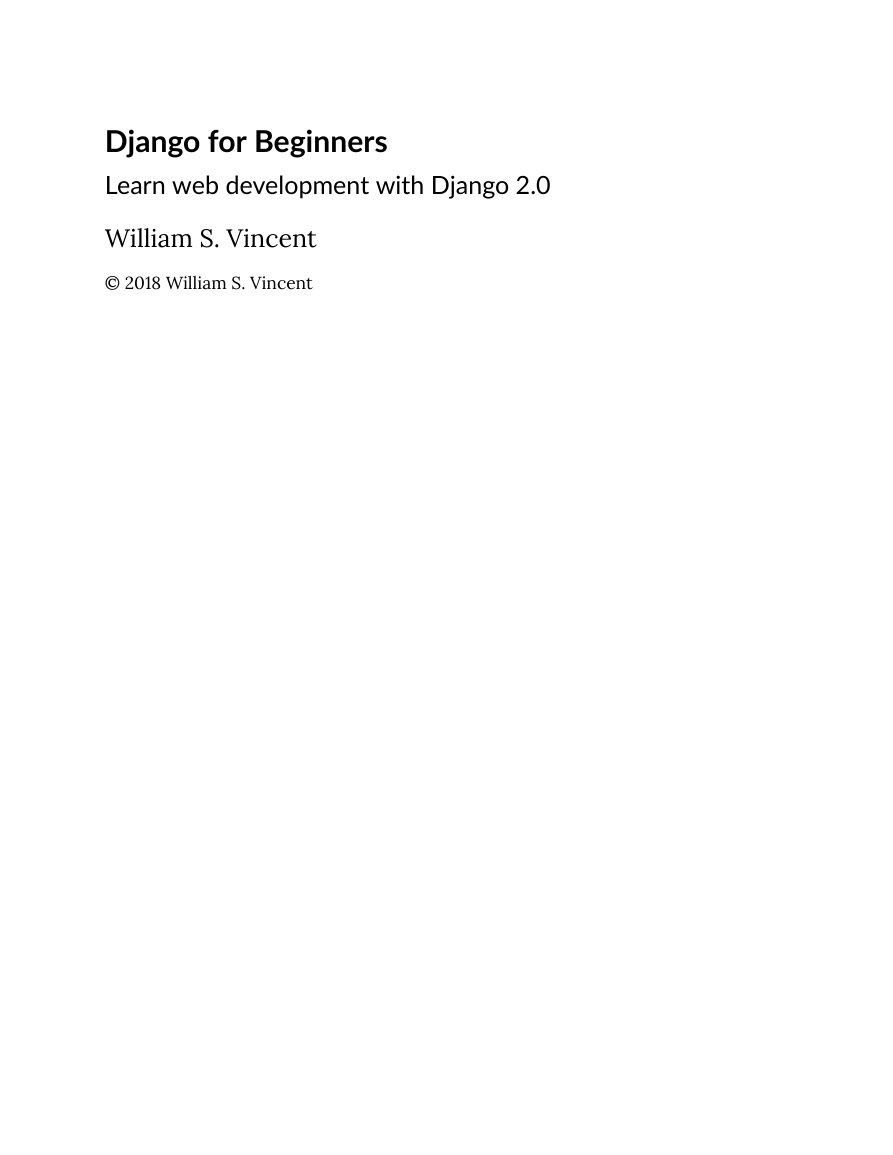
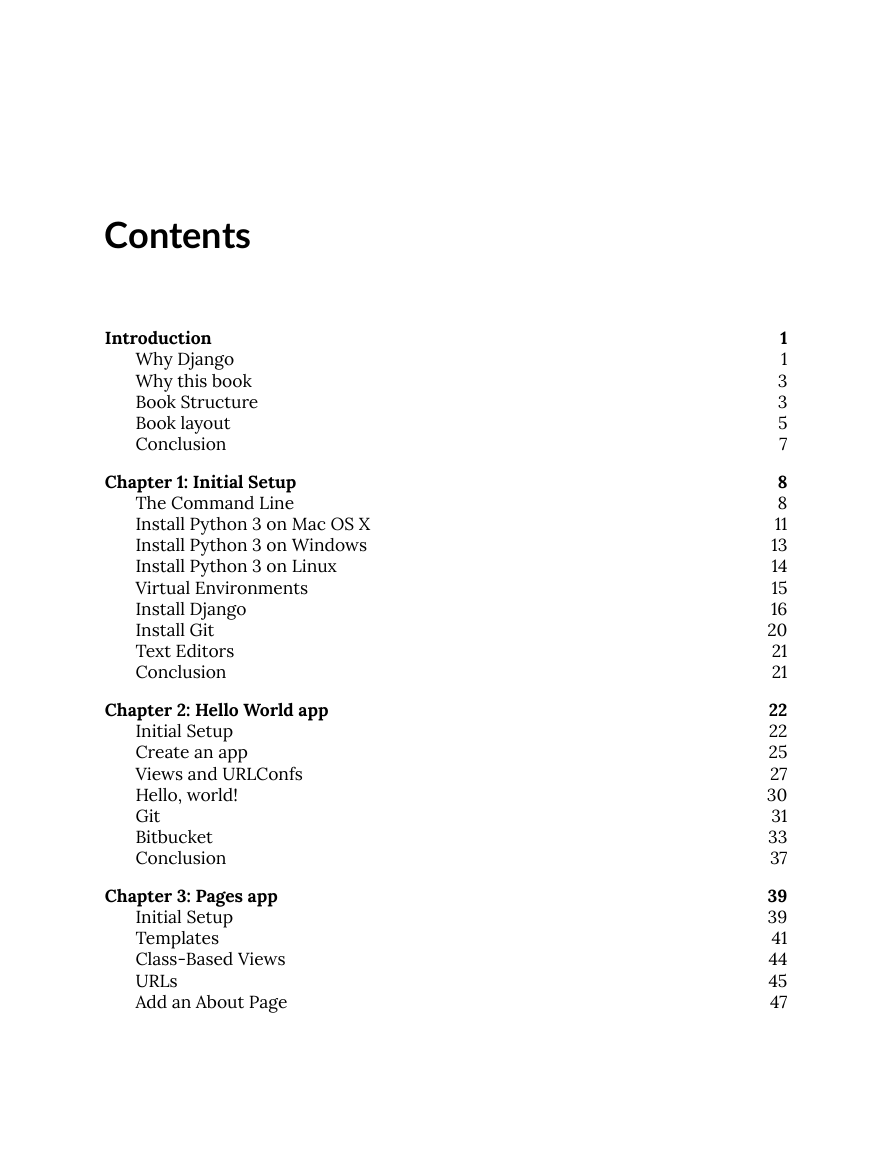
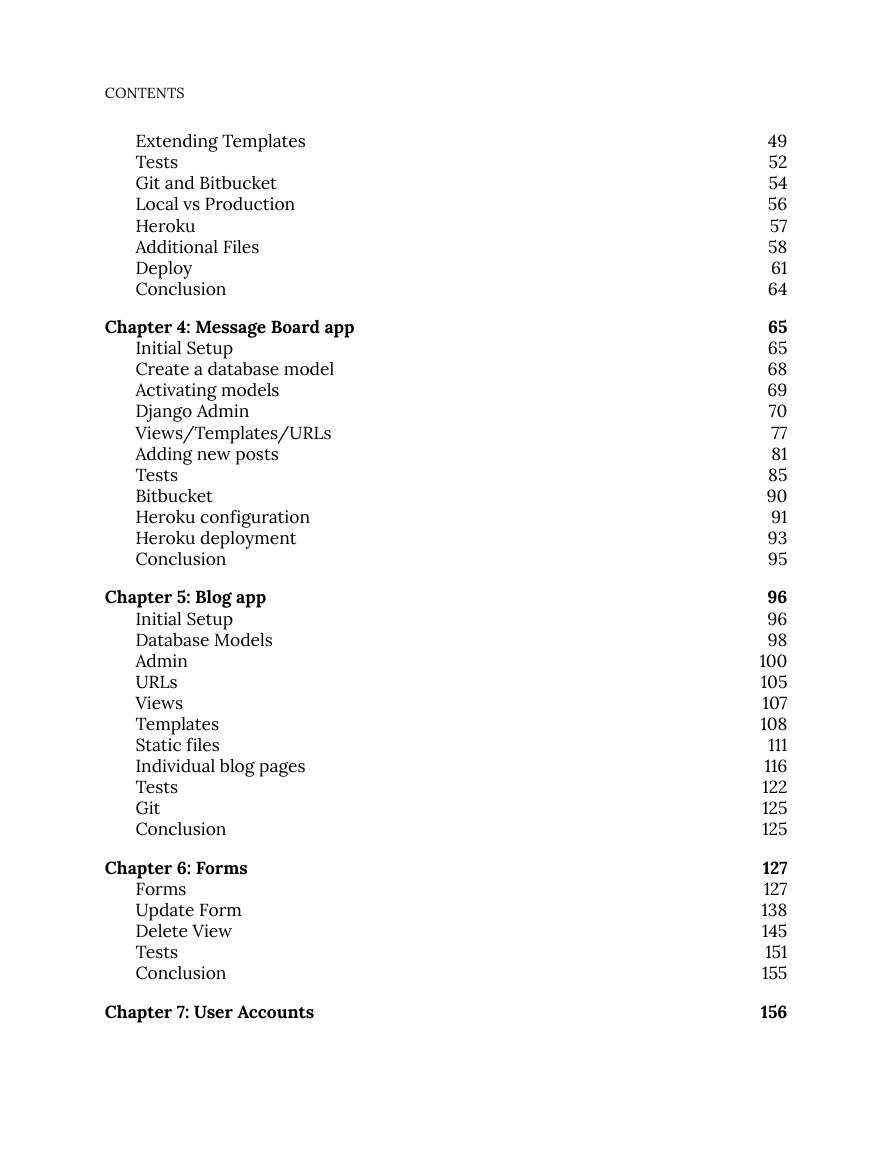
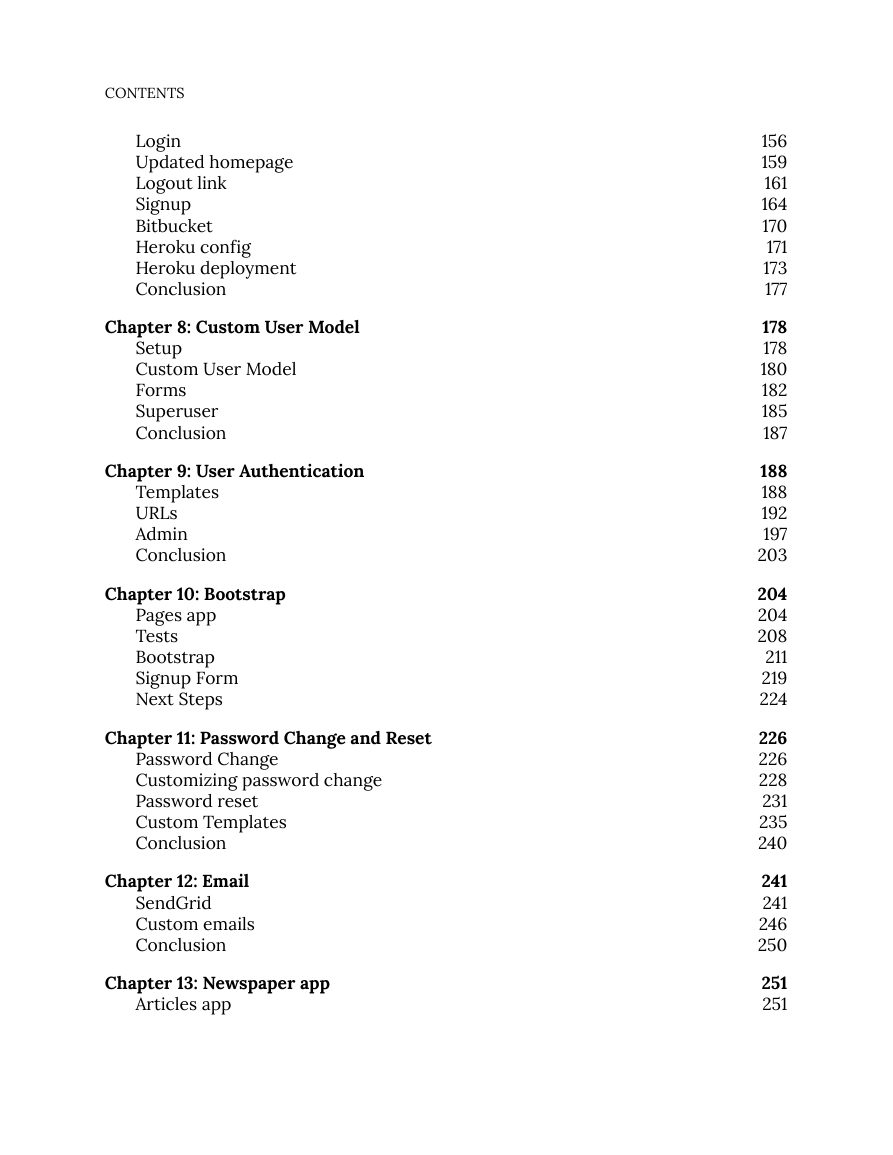
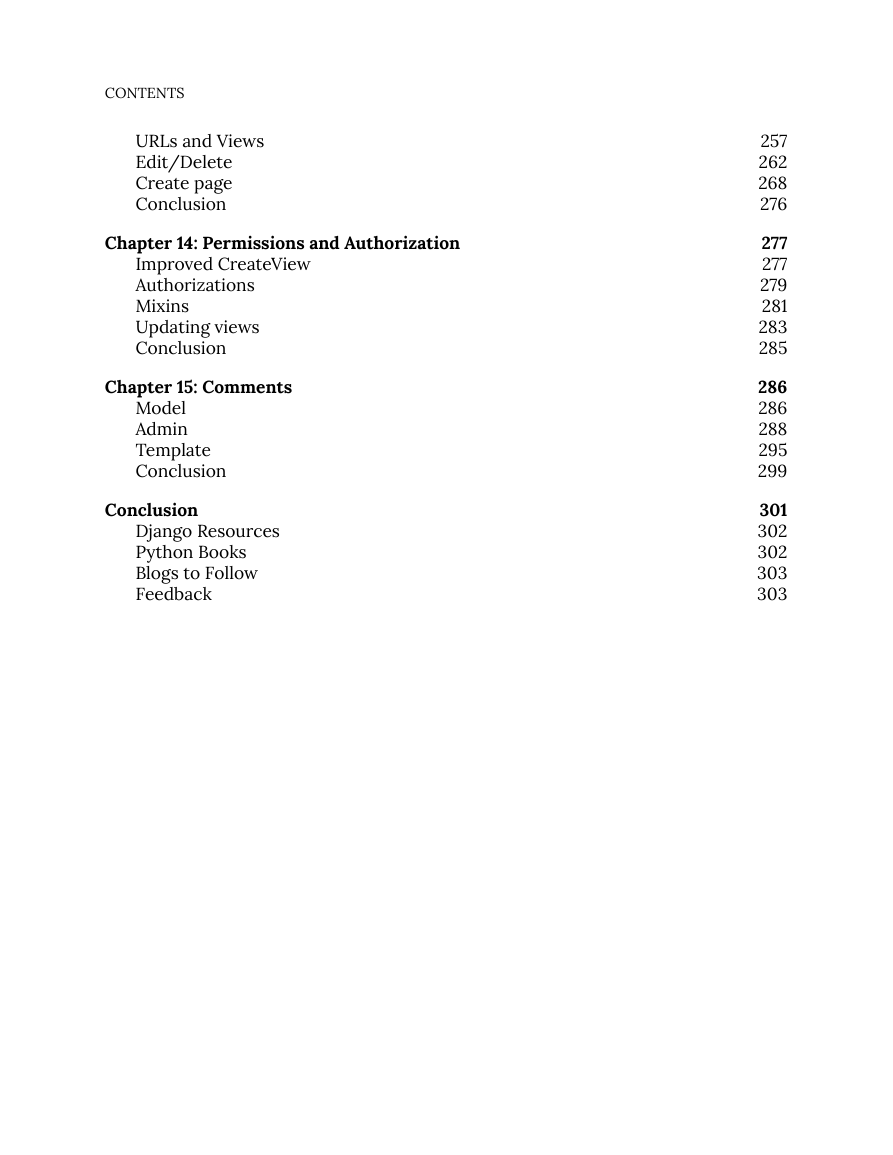
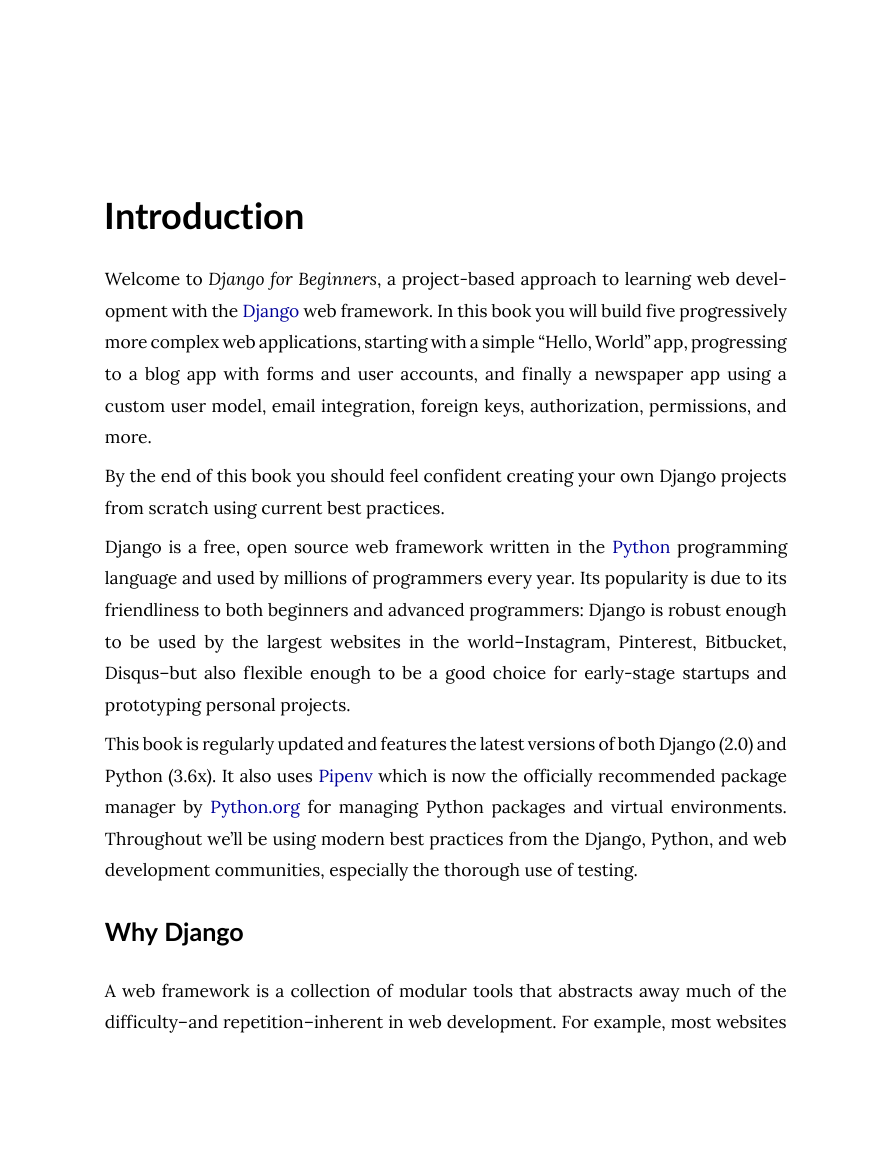










 2023年江西萍乡中考道德与法治真题及答案.doc
2023年江西萍乡中考道德与法治真题及答案.doc 2012年重庆南川中考生物真题及答案.doc
2012年重庆南川中考生物真题及答案.doc 2013年江西师范大学地理学综合及文艺理论基础考研真题.doc
2013年江西师范大学地理学综合及文艺理论基础考研真题.doc 2020年四川甘孜小升初语文真题及答案I卷.doc
2020年四川甘孜小升初语文真题及答案I卷.doc 2020年注册岩土工程师专业基础考试真题及答案.doc
2020年注册岩土工程师专业基础考试真题及答案.doc 2023-2024学年福建省厦门市九年级上学期数学月考试题及答案.doc
2023-2024学年福建省厦门市九年级上学期数学月考试题及答案.doc 2021-2022学年辽宁省沈阳市大东区九年级上学期语文期末试题及答案.doc
2021-2022学年辽宁省沈阳市大东区九年级上学期语文期末试题及答案.doc 2022-2023学年北京东城区初三第一学期物理期末试卷及答案.doc
2022-2023学年北京东城区初三第一学期物理期末试卷及答案.doc 2018上半年江西教师资格初中地理学科知识与教学能力真题及答案.doc
2018上半年江西教师资格初中地理学科知识与教学能力真题及答案.doc 2012年河北国家公务员申论考试真题及答案-省级.doc
2012年河北国家公务员申论考试真题及答案-省级.doc 2020-2021学年江苏省扬州市江都区邵樊片九年级上学期数学第一次质量检测试题及答案.doc
2020-2021学年江苏省扬州市江都区邵樊片九年级上学期数学第一次质量检测试题及答案.doc 2022下半年黑龙江教师资格证中学综合素质真题及答案.doc
2022下半年黑龙江教师资格证中学综合素质真题及答案.doc